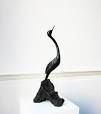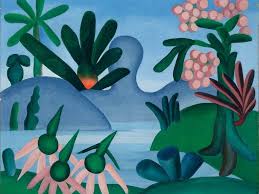The Art of Sculptures: A Timeless Expression of Creativity
Sculpture, one of the oldest forms of artistic expression, has captivated audiences for centuries with its ability to transform raw materials into captivating three-dimensional artworks. From ancient civilizations to modern-day artists, sculptures have served as a medium for storytelling, cultural representation, and personal expression.
History and Evolution
The history of sculpture dates back to prehistoric times when early humans carved figures from stone and wood. Over the centuries, sculptors have experimented with various materials such as marble, bronze, clay, and more recently, unconventional materials like plastic and recycled objects.
Types of Sculptures
Sculptures come in various forms, including statues, reliefs, installations, and kinetic sculptures. Each type offers a unique way for artists to convey their ideas and emotions through physical form. Whether realistic or abstract, sculptures engage viewers with their tactile presence and spatial relationships.
Artistic Process
Creating a sculpture requires skill, patience, and creativity. Artists often start with a concept or idea that they translate into sketches or models before working on the final piece. Techniques such as carving, modeling, casting, and assembling are used to shape the material into the desired form.
Symbolism and Meaning
Sculptures can carry deep symbolism and meaning that resonate with viewers on a profound level. Whether depicting human figures, animals, abstract shapes, or cultural motifs, each sculpture tells a story that reflects the artist’s vision and interpretation of the world around them.
Impact on Society
Throughout history, sculptures have played a significant role in shaping cultural identity and preserving historical narratives. Public sculptures adorn city streets and parks as monuments to commemorate events or honor notable figures. They serve as landmarks that connect communities to their past and inspire future generations.
Conclusion
In conclusion, sculptures continue to be a powerful form of artistic expression that transcends time and space. As artists push the boundaries of traditional techniques and explore new possibilities in sculpture-making, this art form remains an enduring testament to human creativity and ingenuity.
Understanding Sculptures: Types, Famous Works, Definitions, and Grammar
- What are the 4 types of sculpture?
- What is the most famous sculpture?
- What is the definition of a sculpture?
- Is sculpture plural or singular?
What are the 4 types of sculpture?
There are four main types of sculpture: relief sculpture, free-standing sculpture, kinetic sculpture, and installation sculpture. Relief sculpture involves carving or modeling a design on a flat surface, creating a sense of depth while remaining attached to the background. Free-standing sculpture is three-dimensional and can be viewed from multiple angles, often placed in open spaces for viewers to walk around and appreciate from different perspectives. Kinetic sculpture incorporates movement as part of its design, engaging the viewer with dynamic elements. Installation sculpture is a contemporary form that transforms spaces through the arrangement of various objects and materials to create immersive experiences for the audience. Each type of sculpture offers unique artistic possibilities and challenges for creators to explore and express their creative vision.
What is the most famous sculpture?
The question “What is the most famous sculpture?” often sparks debates among art enthusiasts and historians due to the vast array of iconic sculptures throughout history. One of the most widely recognized and celebrated sculptures is Michelangelo’s “David,” a masterpiece of Renaissance art located in Florence, Italy. This monumental marble statue embodies perfection in form and expression, symbolizing human strength and beauty. Its intricate details and emotional depth have solidified its status as a timeless symbol of artistic achievement and cultural heritage, making it a standout example when discussing the world’s most famous sculptures.
What is the definition of a sculpture?
The definition of a sculpture refers to a three-dimensional artwork created by shaping or combining materials such as stone, metal, wood, clay, or other substances. Sculptures can take various forms, including statues, reliefs, installations, and kinetic pieces. Unlike two-dimensional art forms like paintings or drawings, sculptures occupy physical space and invite viewers to engage with them from multiple angles. The essence of sculpture lies in the artist’s ability to transform raw materials into expressive forms that convey ideas, emotions, and narratives through texture, shape, and volume.
Is sculpture plural or singular?
The question of whether “sculpture” is plural or singular often arises due to its unique nature as both a singular noun referring to the art form itself and a plural noun when referring to multiple works of sculpture. In its singular form, “sculpture” encompasses the entire discipline and practice of creating three-dimensional artworks, while in its plural form, “sculptures” denotes individual pieces or objects created through sculpting techniques. Understanding this distinction can help clarify the usage of “sculpture” in different contexts and appreciate the versatility of this artistic medium.





